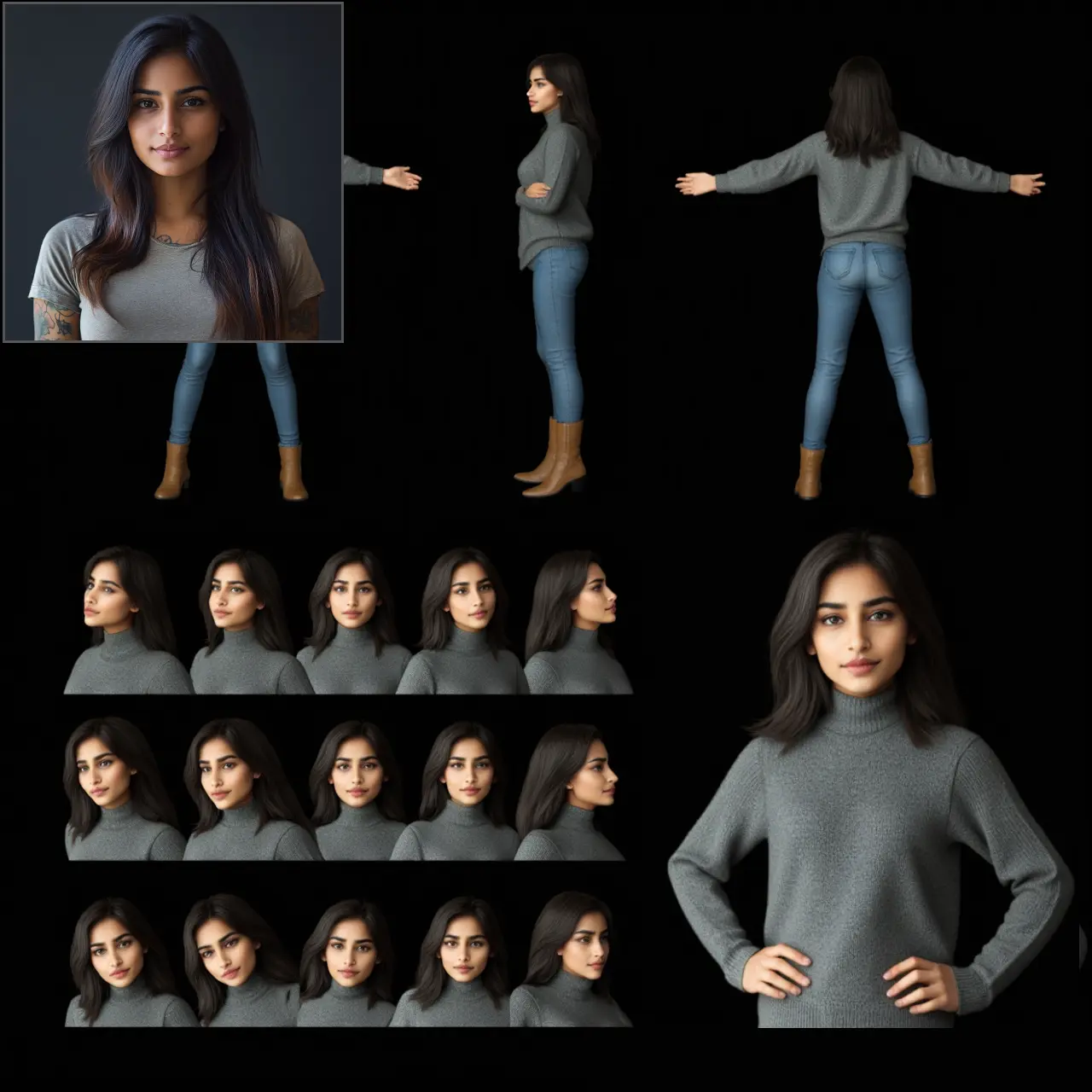ComfyUI Node: Iterative Mixing KSampler Advanced
Iterative Mixing KSampler Advanced
Categorytest
ttulttul (Account age: 5042days) Extension
ComfyUI Iterative Mixing Nodes Latest Updated
2025-03-10 Github Stars
0.12K
How to Install ComfyUI Iterative Mixing Nodes
Install this extension via the ComfyUI Manager by searching for ComfyUI Iterative Mixing Nodes- 1. Click the Manager button in the main menu
- 2. Select Custom Nodes Manager button
- 3. Enter ComfyUI Iterative Mixing Nodes in the search bar
Visit ComfyUI Online for ready-to-use ComfyUI environment
- Free trial available
- 16GB VRAM to 80GB VRAM GPU machines
- 400+ preloaded models/nodes
- Freedom to upload custom models/nodes
- 200+ ready-to-run workflows
- 100% private workspace with up to 200GB storage
- Dedicated Support
Iterative Mixing KSampler Advanced Description
Enhances latent image generation through iterative mixing and refining, with advanced noise and de-noise capabilities for precise control.
Iterative Mixing KSampler Advanced:
The Iterative Mixing KSampler Advanced node is designed to enhance the process of generating high-quality latent images by iteratively mixing and refining them. This node leverages advanced techniques to perform both noising (unsampling) and de-noising (sampling) within a single node, providing a streamlined and efficient workflow for AI artists. By utilizing various blending schedules and functions, it allows for precise control over the mixing process, ensuring that the generated images meet the desired artistic standards. The node's flexibility in adjusting parameters such as denoising strength, blending schedules, and normalization options makes it a powerful tool for creating detailed and visually appealing outputs.
Iterative Mixing KSampler Advanced Input Parameters:
model
This parameter specifies the model to be used for the sampling process. It is essential as it defines the underlying architecture and weights that will influence the generation of the latent images.
positive
This parameter represents the positive conditioning input, which guides the model towards desired features in the generated image. It helps in emphasizing certain aspects that the artist wants to highlight.
negative
This parameter represents the negative conditioning input, which helps in suppressing unwanted features in the generated image. It is useful for refining the output by reducing the influence of undesired elements.
latent_image
This parameter is the initial latent image that will be iteratively refined through the sampling process. It serves as the starting point for the generation.
seed
This integer parameter sets the random seed for the sampling process, ensuring reproducibility of the results. The default value is 0, with a minimum of 0 and a maximum of 0xffffffffffffffff.
steps
This integer parameter defines the number of steps for the sampling process. More steps generally lead to higher quality images but increase computation time. The default value is 40, with a minimum of 0 and a maximum of 10000.
cfg
This float parameter, known as the classifier-free guidance scale, controls the strength of the guidance. Higher values result in stronger guidance towards the conditioning inputs. The default value is 8.0, with a range from 0.0 to 100.0, adjustable in steps of 0.1.
sampler_name
This parameter specifies the name of the sampler to be used. It determines the algorithm that will be applied for the sampling process.
scheduler
This parameter defines the scheduler to be used, which influences the timing and sequence of the sampling steps.
denoise
This float parameter controls the strength of the denoising process. A value of 1.0 means full denoising, while lower values reduce the denoising effect. The default value is 1.0, with a range from 0.0 to 1.0, adjustable in steps of 0.01.
alpha_1
This float parameter influences the blending strength during the iterative mixing process. The default value is 2.4, with a range from 0.05 to 100.0, adjustable in steps of 0.05.
blending_schedule
This parameter specifies the schedule for blending during the iterative mixing process. It determines how the blending strength changes over the iterations. The default value is "cosine".
blending_function
This parameter defines the function used for blending during the iterative mixing process. It determines how the latent images are combined. The default value is "addition".
normalize_on_mean
This boolean parameter, when set to true, normalizes the latent images based on their mean. The default value is false.
Iterative Mixing KSampler Advanced Output Parameters:
LATENT
The output parameter is a latent image that has been iteratively refined through the mixing and sampling process. This latent image can be further processed or directly used to generate the final visual output. It represents the culmination of the iterative adjustments and blending, resulting in a high-quality and detailed image.
Iterative Mixing KSampler Advanced Usage Tips:
- Experiment with different
blending_scheduleandblending_functionsettings to achieve unique artistic effects. - Adjust the
stepsparameter to balance between image quality and computation time; more steps generally yield better results. - Use the
seedparameter to reproduce specific results, which is useful for iterative experimentation and fine-tuning. - Fine-tune the
denoiseandalpha_1parameters to control the level of detail and smoothness in the generated images.
Iterative Mixing KSampler Advanced Common Errors and Solutions:
"Invalid model input"
- Explanation: The model parameter is not correctly specified or is incompatible.
- Solution: Ensure that the model input is correctly defined and compatible with the node's requirements.
"Steps out of range"
- Explanation: The steps parameter is set outside the allowable range.
- Solution: Adjust the steps parameter to be within the range of 0 to 10000.
"Invalid blending function"
- Explanation: The blending_function parameter is set to an unsupported value.
- Solution: Choose a valid blending function from the provided list of options.
"Denoise value out of range"
- Explanation: The denoise parameter is set outside the allowable range.
- Solution: Adjust the denoise parameter to be within the range of 0.0 to 1.0.
Iterative Mixing KSampler Advanced Related Nodes
RunComfy is the premier ComfyUI platform, offering ComfyUI online environment and services, along with ComfyUI workflows featuring stunning visuals. RunComfy also provides AI Models, enabling artists to harness the latest AI tools to create incredible art.


